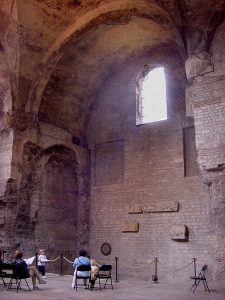
Roman baths of Cluny in Paris – barrel vault
Making an arch into a roof
Once you’ve built an arch, you know how to make a doorway or a window without having to use big expensive beams. But how do you make the whole roof that way?
History of arches
West Asian architecture
All our West Asia articles
Easy: you stick a whole lot of arches together in a row, and that makes a roof. That’s a barrel vault: an arch over and over. (This one is in the Roman baths at Cluny in Paris).
Why is that called a barrel vault?
They’re called barrel vaults because they look like the inside of a barrel. They weren’t originally called that, because barrels weren’t invented until long after barrel vaults, though.
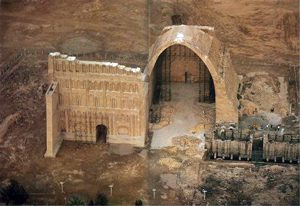
Arch of Sapor – Parthians
Who made the first barrel vaults?
Ancient Egypt’s architecture
Parthian architecture
Roman architecture
The Assyrians and the Romans use barrel vaults
At Nineveh, the Assyrians used barrel vaults in their fortification walls. People in the Parthian Empire also used barrel vaults. The Romans also loved barrel vaults; they used concrete to build barrel vaults all over Europe and North Africa.
Roman amphitheaters
Roman baths
Basilica of Maxentius
Aqueducts for water

Qasr Amra (Jordan, 700s AD)
Barrel vaults in the Islamic Empire
In the Middle Ages, architects kept up the West Asian tradition and used barrel vaults to put stone roofs on Umayyad castles in West Asia, like these barrel vaults on the castle at Qasr Amra, from the early 700s AD. The Al-Aqsa mosque in Jerusalem, from the 1100s AD, also used small barrel vaults, though the main nave has a flat wooden roof.
Umayyad architecture
Medieval Islamic architecture
What is a nave?
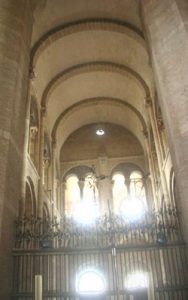
Toulouse, ca. 1100 AD
Barrel vaults in medieval Europe
Further west, in Europe, architects used much bigger barrel vaults to cover Romanesque churches and cathedrals. This Romanesque barrel vault is from a big church in Toulouse, in the south of France, about 1100 AD. By the late 1100s AD, however, most architects in Europe were using a more complicated kind of stone roof called a groin vault.
St. Sernin in Toulouse
Romanesque architecture
What is a groin vault?
Were there barrel vaults in other places?
In India and China, people used barrel vaults for small, often underground structures like tombs and sewage pipes, but not for houses or big public buildings. But in South Africa, North and South America, people didn’t build barrel vaults at all.
Learn by doing: building an arch
More about groin vaults
Bibliography and further reading about barrel vaults:
Arches to Zigzags: An Architecture ABC, by Michael J. Crosbie (2000). Shows what an arch is, or a gable, or an eave. Easy reading.
Eyewitness: Building, by Philip Wilkinson, Dave King, and Geoff Dann (2000). Lavishly illustrated, like other Eyewitness books, and with good explanations of most architectural terms.
Cathedral: The Story of Its Construction, by David Macaulay (1981). Beautiful drawings and clear text explain exactly how medieval craftsmen built a groined vault. Easy reading.


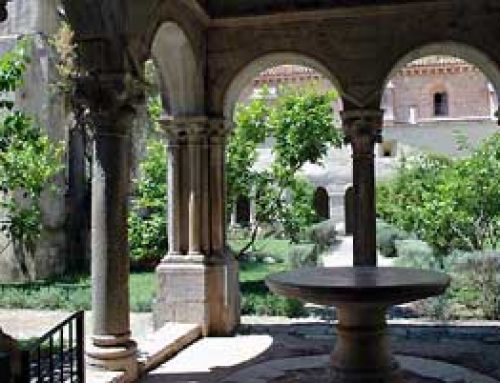
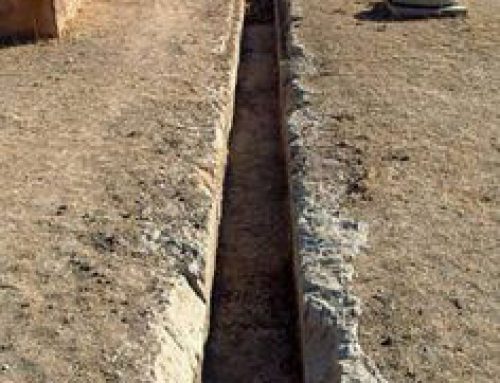

[…] Barrel vaults are somewhat simple in design and consist of an arch throughout the entire room’s length. The barrel-like arch can be painted in an elaborate pattern or left as it is for a simple look. This type of vaulted ceiling is ideal for bedrooms as it gives a comforting feeling. It also works well in hallways and home theaters. […]
[…] barrel vault is an ancient architectural form (read more). It was used in stone by the Persians and Romans, and more recently in glass and iron for […]